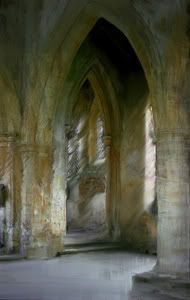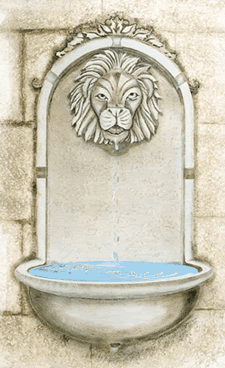Two Quotes on Myth Become Fact
 "Child, if you will, it is mythology. It is but truth, not fact: an image, not the very real. But then it is My mythology. The words of Wisdom are also myth and metaphor: but since they do not know themselves for what they are, in them the hidden myth is master, here it should be servant: and it is but of man's inventing. This is My inventing, this is the veil under which I have chosen to appear even from the first until now. For this end I made your senses and for this end your imagination, that you might see My face and live. What would you have? Have you not heard among the pagans the story of Semele? Or was there any age in any land when men did not know that corn and wine were the blood and body of a dying and yet living God?
"Child, if you will, it is mythology. It is but truth, not fact: an image, not the very real. But then it is My mythology. The words of Wisdom are also myth and metaphor: but since they do not know themselves for what they are, in them the hidden myth is master, here it should be servant: and it is but of man's inventing. This is My inventing, this is the veil under which I have chosen to appear even from the first until now. For this end I made your senses and for this end your imagination, that you might see My face and live. What would you have? Have you not heard among the pagans the story of Semele? Or was there any age in any land when men did not know that corn and wine were the blood and body of a dying and yet living God?~C.S. Lewis, The Pilgrim's Regress, book 9, Chapter 5 (1933)
Now as myth transcends thought, Incarnation transcends myth. The heart of Christianity is a myth which is also a fact. The old myth of the Dying God, without ceasing to be myth comes down from the heaven of legend and imagination to the earth of history. It happens--at a particular date, in a particular place, followed by definable historical consequences. We pass from a Balder or an Osiris, dying nobody knows when or where, to a historical Person crucified (it is all in order) under Pontius Pilate. By becoming fact it does not cease to be myth: that is the miracle.
~C.S. Lewis, God in the Dock, "Myth Became Fact" (1944)
_______________________________
On this day (catching up):
Jan 6 1943 The Abolition of Man is published by Oxford University Press
Jan 7 1955 Lewis takes up residence in Magdalene College, Cambridge
Cool link of the day:Semele, Greek Mythology




3 Comment(s):
Well, I think that Lewis is saying here that God had a hand in pre-Christian myth all along. He was teaching the world about his holiness, sort of preparing the way, because man wouldn't be able to handle the truth all at once (thus the reference to Semele's story). IMHO
Michelangelo painted Greek oracles in the Sistine Chapel because they were said to have foretold Christ in their prophecies. Renaisance philosopher Ficino spent a lot of time reconciling Plato and Christianity. I think this fusion was neoplatonism. It does seem likely that God would give the other peoples a hint or two at least--MrKimi
Hey! Mr. Kimi's here! Nice to see you. =)
Post a Comment
<< Home